TaylorMade are partial to the odd driver launch so when even their excitement about the M1 driver results in their first global media launch event for over a decade, then it is time to get enthusiastic too.
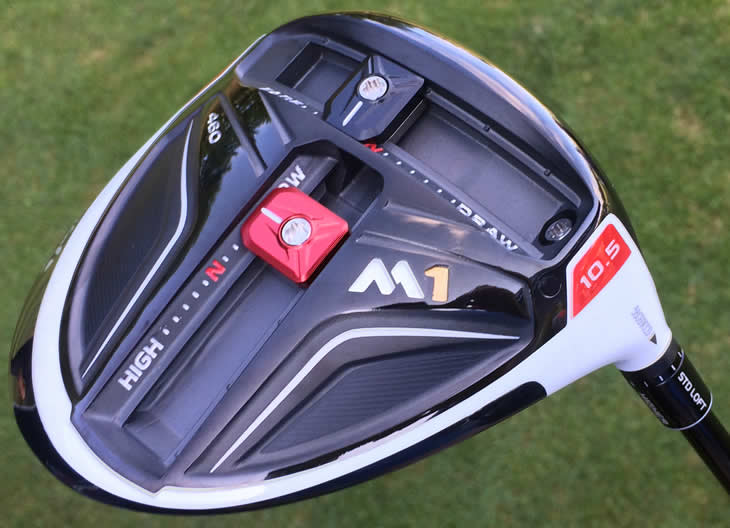
The M1 is different, but not necessarily new, as the materials used are tried and trusted. However the combination of materials and how they are integrated into the existing TaylorMade philosophies is what makes the M1 driver unique.
Tried and trusted method #1 is making the crown lighter so you can move weight and hence the Centre of Gravity (CG) lower in the sole to improve the launch conditions.
TaylorMade has used carbon composite in the crown of the M1 to achieve this and it also has the added benefit of the carbon fibre lattice pattern giving the back of the driver a great look.

This is tried and trusted technology #2 and when I asked Chief Technical Officer Benoit Vincent why it took them so long to use a material that has been around for over 30 years, he said that they had been testing it regularly over that time and their advances with titanium meant that carbon could not outperform it.
Cost and manufacturing capabilities probably also had an influence, but now that it is here we should rejoice as it not only gives a great look, but also a great sound at impact.
The crown also features a white titanium front section just to keep the white and black camps happy, although it is interesting to note that TaylorMade are not ruling out an all black version yet.
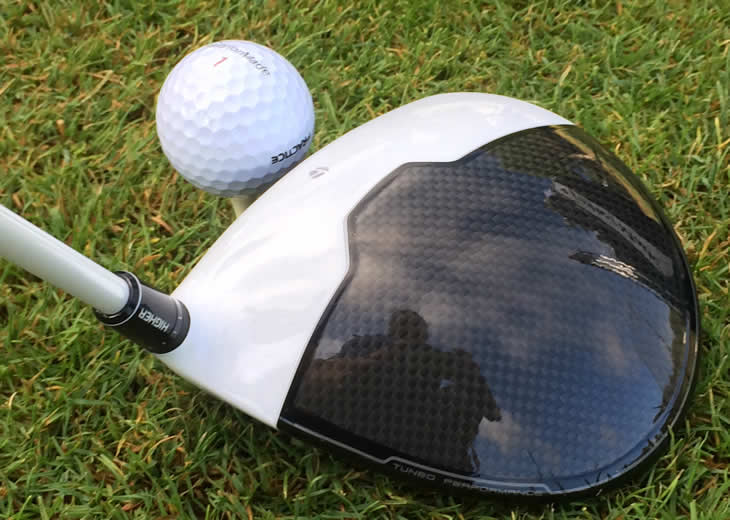
The contrast of the white with the black face and black carbon crown does help with the alignment, even if it does look like you are just swinging a narrow white bit of titanium.
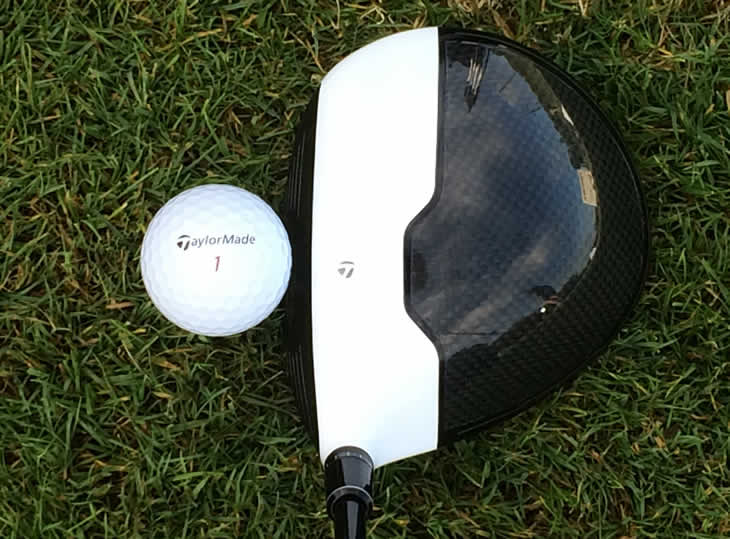
The 5 grams of weight the carbon composite saves finds its way into the T-Track sole set up that now features a red 10 gram front to back sliding weight as well as a black 15 gram left to right sliding weight.
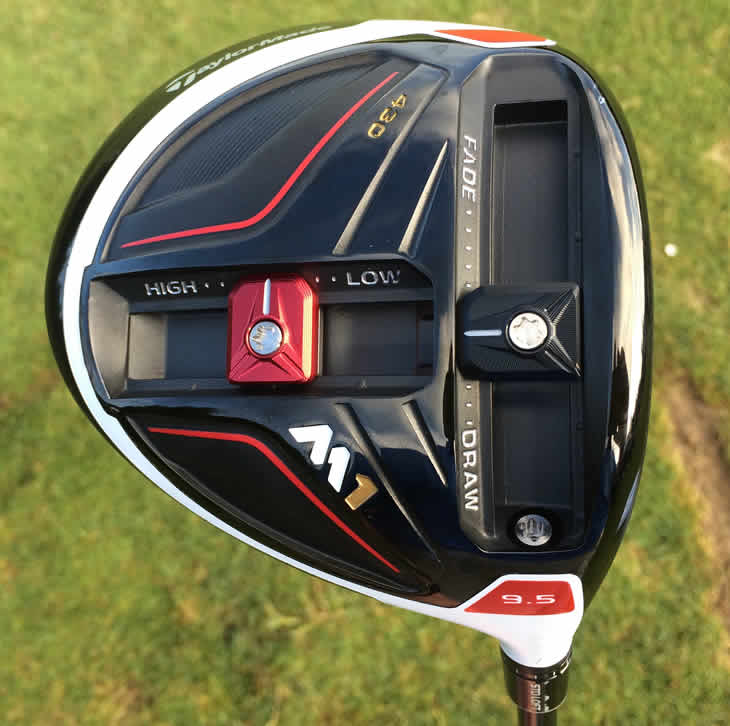
The front weight will create a fade or a draw whereas the back weight will affect the launch angle with a higher launch the further back the weight is. Using two separate tracks also allows for the CG to be moved left to right independently of it moving front to back.
Again this is tried and tested stuff and the M1 is not the first driver to have a sliding weight going forward and back independently from weight moving right to left. However it is the first to offer this many positions for those nickel tungsten alloy weights in a 460cc head.
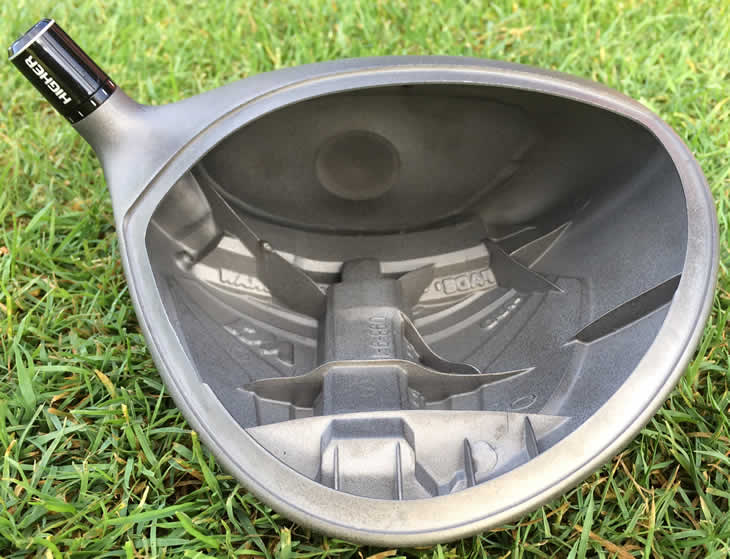
The front track has 18 positions for the sliding weight and the back track has 15, so that is 270 possible combinations.
Add in 12 settings on the adjustable hosel and four different head lofts from 8.5 to 12° and you are up to 12,960 options before you get to the 3 stock shafts and, in all likelihood, a TP shaft in due course too.
Oh, and you can have all this in a lower spinning 430cc head as well, albeit with one less head loft and one less notch on each weight track.
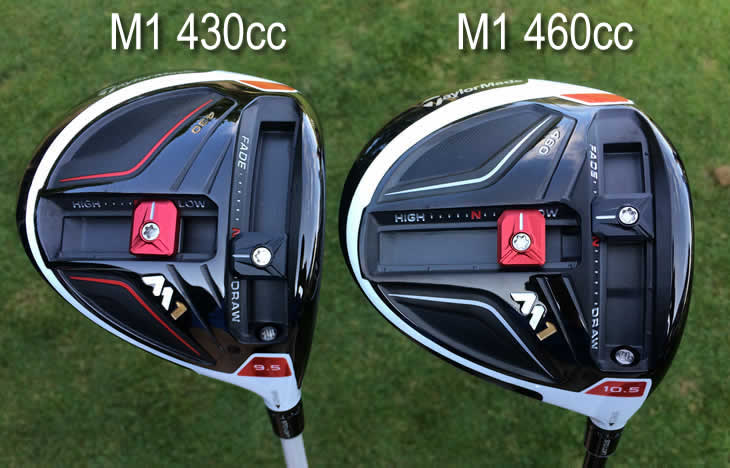
The 430cc version is slightly more compact at address with a slightly taller crown that is not as deep in order to move the CG forward and reduce the level of spin further.

Buying the TaylorMade M1 driver off the shelf is an option, but probably not the best one, as you need to appreciate that this is a driver that enables you to fine tune the set up to the nth degree to maximise your performance.
Not needing a second invitation to do a launch monitor session I went through the process with a TaylorMade fitter at said global media event in the USA.

Choosing the right head loft is the first step and moving up from the 9.5 to the 10.5° head gave a better launch angle as my spin was under 2000 rpm at 100mph with the lower loft.
From there it was getting the right 45.5 inch shaft and the mid-launch Mitsubishi KuroKage TiNi Silver 60 was the best for me as the Aldila Rogue 70 felt a bit firm and the Fujikura Pro 60 gave a flight that was a little on the high side.
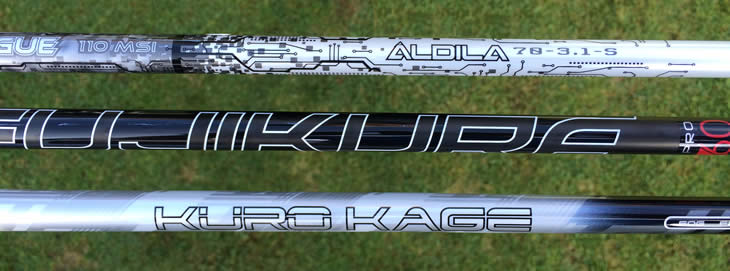
Then it was into the fine tuning and to cut to the chase, turning the hosel up one notch to add 0.75° of loft and moving the front weight a little to the draw side gave me the most consistent flight and the biggest distance gain over the unadjusted set up I started with.
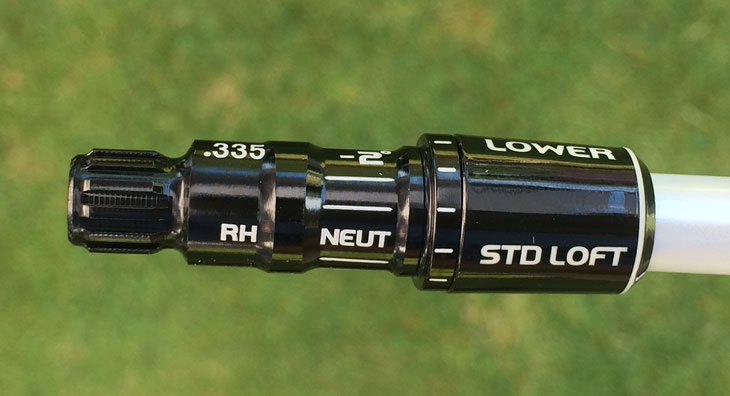
The launch was up at 15°, but the spin was still in the low 2000s rpm. As we moved the settings around it was sometimes worse performance and sometimes similar but without feeling as good.
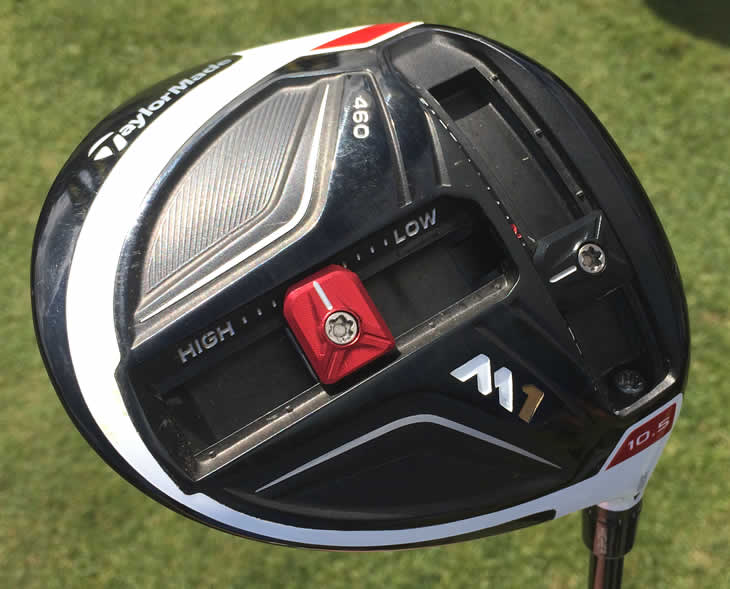
For instance having the front weight further to the heel for more draw gave the feeling the head was flipping over at impact, which did not appeal.
Moving the back weight fully forward or back in the rear track did not affect the overall distance performance that much, but it did affect the launch and spin marginally.
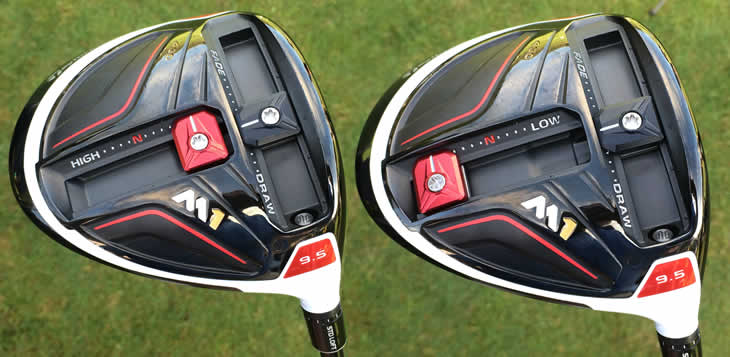
As you go through the fitting process you realise that the end result will be the best compromise of what produces the optimum performance with what also feels best to you, as I am sure there must be more than one of the thousands of options that are perfect for each golfer.
Overall for most people the M1 driver spins around 300rpm less than the R15 driver thanks to the lower weight design and the new structure does give a better performing driver.
The sound and feel are excellent and the forgiveness was very good from a head with an MOI of around 4500 g/cm2 and the now familiar inverted cone face.
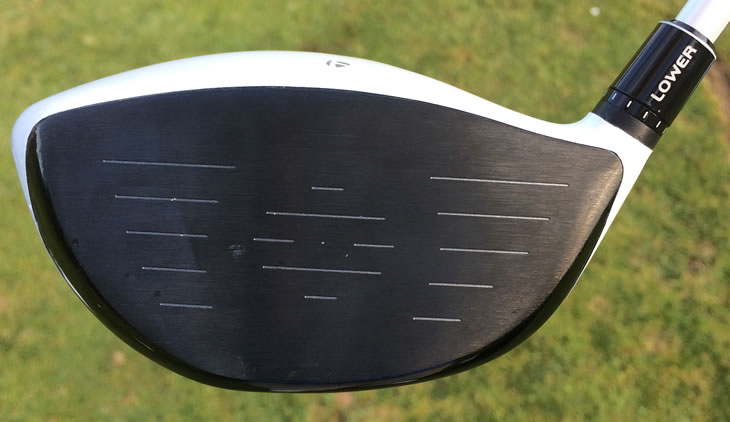
As a result it is safe to say that this really is a driver for everyone, because if you can't use the multitude of options to set the M1 up to maximise your performance then you would probably be better off spending the pretty steep price tag on numerous lessons or another sport.
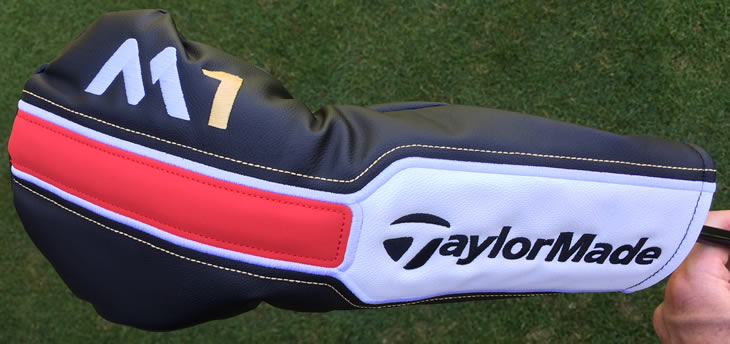
Overall then, the TaylorMade M1 driver is a step up from the R15 and the combination of tried and trusted technologies in a new set up and a striking look is something we all should get excited about.